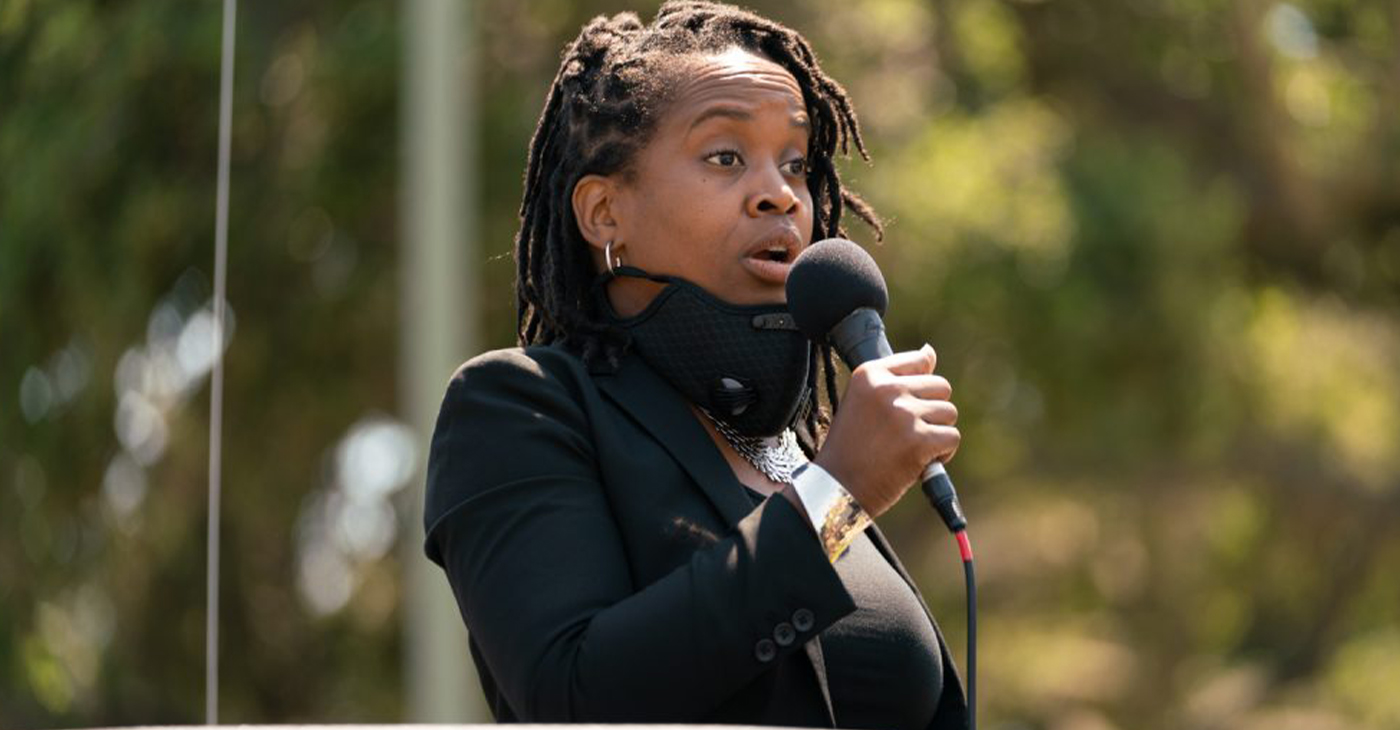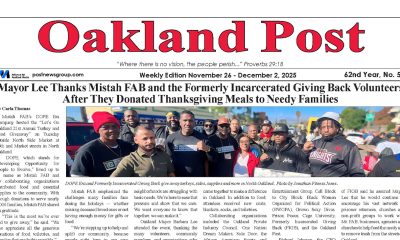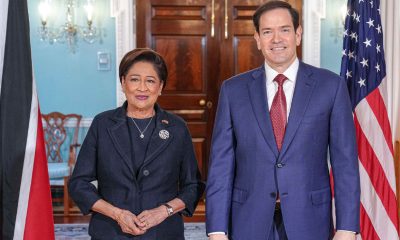Politics
US Counterterrorism Strategy in Yemen Collapses Amid Chaos

In this March 21, 2015, photo, Members of a militia group loyal to Yemen’s President Abed Rabbo Mansour Hadi, known as the Popular Committees, chew qat as they sit next to their tank, guarding a major intersection in Aden, Yemen. Once hailed by President Barack Obama as a model for fighting extremism, the U.S. counterterrorism strategy in Yemen has all but collapsed as the country descends into chaos, according to U.S. and Yemeni officials. (AP Photo/Hamza Hendawi, File)
JULIE PACE, Associated Press
KEN DILANIAN, Associated Press
WASHINGTON (AP) — Once hailed by President Barack Obama as a model for fighting extremism, the U.S. counterterrorism strategy in Yemen has all but collapsed as the country descends into chaos, according to U.S. and Yemeni officials.
Operations against militants have been scaled back dramatically amid the fall of the American-backed government and the evacuation of U.S. personnel. What had been consistent pressure on Yemen’s dangerous al-Qaida affiliate has been eased, the officials say, and a safe haven exists for the development of an offshoot of the Islamic State group.
It’s a swift and striking transformation for an anti-terror campaign Obama heralded just six months ago as the template for efforts to fight the Islamic State in Iraq and Syria. The shift has left Obama open to criticism that he failed to anticipate the risks of a light footprint strategy that aims to put fragile governments and beleaguered local security forces, not the U.S. military, at the forefront.
In response, administration officials argue that the U.S. has no choice but to rely on proxies in the terror fight if it wants to avoid American ground troops becoming bogged down as they did in Iraq and Afghanistan.
Yet Barbara Bodine, a former U.S. ambassador to Yemen, said even the most optimistic regional experts did not share Obama’s view in the fall that the Yemen campaign was a model of success.
“It was being defined in terms of what we were doing to develop local forces and use drones and counter the immediate and real security threat,” said Bodine, now director of the Institute for the Study of Diplomacy at Georgetown University. “But what we hadn’t done, certainly had not done visibly enough, was get at the economic and governance issues that were driving the problem.”
Since September, Houthi rebels linked to Iran have ousted President Abed-Rabbo Mansour Hadi and dissolved the parliament. Al-Qaida in the Arabian Peninsula (AQAP), which has been affiliated with some of the most serious attempted attacks on the U.S. since 9/11, has sought to exploit the chaos. Last month, the U.S. shuttered its embassy in the capital of Sanaa, and over the weekend the remainder of American military personnel withdrew from the south of the country.
“Certainly, repositioning our forces out of Yemen will make our fight against AQAP more difficult. There is no question about that,” Pentagon spokesman Col. Steve Warren said Tuesday.
Former CIA director Michael Hayden told Congress that U.S. intelligence relationships in Yemen “will erode over time because of our lack of physical presence in the county.”
Since Obama took office, the U.S. has poured millions of dollars into efforts to stabilize Yemen’s government and boost its security forces. Under Hadi, U.S.-trained Yemeni troops were mounting regular raids to kill and capture al Qaida militants, punctuated by occasional CIA drone strikes aimed at senior figures.
The strategy has been guided by the central tenets of Obama’s philosophy for fighting extremists overseas: targeting extremists from the air, bolstering the capacity of foreign governments and avoiding putting large numbers of U.S. military personnel on the ground in dangerous countries.
“It is the model that we’re going to have to work with, because the alternative would be massive U.S. deployments in perpetuity, which would create its own blowback and cause probably more problems than it would potentially solve,” Obama said in January as the situation in Yemen deteriorated.
Now, virtually all of the Yemeni troops that had worked with the U.S. are engaged on one side or another of a three-pronged political struggle between the remnants of the Hadi government, supporters of former President Ali Abdullah Saleh, and the Houthi faction, U.S. officials say. The officials insisted on anonymity because they were not authorized to speak by name about sensitive intelligence assessments.
CIA drone strikes will continue, the officials said, but there will be fewer of them. The agency’s ability to collect intelligence on the ground in Yemen, while not completely gone, is much diminished. There have been just four U.S. drone strikes reported in Yemen this year, according to Long War Journal, a web site that tracks the attacks. That is about half the pace that last year resulted in 23 strikes over 12 months.
What’s less clear is whether AQAP will be able to take advantage of the situation to renew its active plotting against Western aviation. The group has successfully put three bombs on American-bound jets, none of which exploded. In 2012, the CIA, along with British and Saudi intelligence services, used a double agent to obtain a new design by AQAP’s master bomb maker of a device made to slip past airport security.
On Capitol Hill, there was bipartisan concern about the intelligence gap that could be created by the tumult in Yemen and the withdrawal of American personnel.
“Good intelligence stops plots against the homeland,” said Rep. Michael McCaul, the Texas Republican who chairs the Homeland Security Committee. “Without that intelligence, we cannot effectively stop it.”
Rep. Adam Schiff of California, ranking Democrat on the House intelligence committee, said the drawdown of the American presence “does diminish our visibility into what’s going on there and given the concerns about what we have about AQAP and their bomb-making prowess, that’s a concern.”
___
Follow Julie Pace at http://twitter.com/jpaceDC and Ken Dilanian at http://twitter.com/KenDilanianAP
Copyright 2015 The Associated Press. All rights reserved. This material may not be published, broadcast, rewritten or redistributed.
Alameda County
Oakland Council Expands Citywide Security Cameras Despite Major Opposition
In a 7-1 vote in favor of the contract, with only District 3 Councilmember Carroll Fife voting no, the Council agreed to maintain its existing network of 291 cameras and add 40 new “pan-tilt-zoom cameras.”

By Post Staff
The Oakland City Council this week approved a $2.25 million contract with Flock Safety for a mass surveillance network of hundreds of security cameras to track vehicles in the city.
In a 7-1 vote in favor of the contract, with only District 3 Councilmember Carroll Fife voting no, the Council agreed to maintain its existing network of 291 cameras and add 40 new “pan-tilt-zoom cameras.”
In recent weeks hundreds of local residents have spoken against the camera system, raising concerns that data will be shared with immigration authorities and other federal agencies at a time when mass surveillance is growing across the country with little regard for individual rights.
The Flock network, supported by the Oakland Police Department, has the backing of residents and councilmembers who see it as an important tool to protect public safety.
“This system makes the Department more efficient as it allows for information related to disruptive/violent criminal activities to be captured … and allows for precise and focused enforcement,” OPD wrote in its proposal to City Council.
According to OPD, police made 232 arrests using data from Flock cameras between July 2024 and November of this year.
Based on the data, police say they recovered 68 guns, and utilizing the countywide system, they have found 1,100 stolen vehicles.
However, Flock’s cameras cast a wide net. The company’s cameras in Oakland last month captured license plate numbers and other information from about 1.4 million vehicles.
Speaking at Tuesday’s Council meeting, Fife was critical of her colleagues for signing a contract with a company that has been in the national spotlight for sharing data with federal agencies.
Flock’s cameras – which are automated license plate readers – have been used in tracking people who have had abortions, monitoring protesters, and aiding in deportation roundups.
“I don’t know how we get up and have several press conferences talking about how we are supportive of a sanctuary city status but then use a vendor that has been shown to have a direct relationship with (the U.S.) Border Control,” she said. “It doesn’t make sense to me.”
Several councilmembers who voted in favor of the contract said they supported the deal as long as some safeguards were written into the Council’s resolution.
“We’re not aiming for perfection,” said District 1 Councilmember Zac Unger. “This is not Orwellian facial recognition technology — that’s prohibited in Oakland. The road forward here is to add as many amendments as we can.”
Amendments passed by the Council prohibit OPD from sharing camera data with any other agencies for the purpose of “criminalizing reproductive or gender affirming healthcare” or for federal immigration enforcement. California state law also prohibits the sharing of license plate reader data with the federal government, and because Oakland’s sanctuary city status, OPD is not allowed to cooperate with immigration authorities.
A former member of Oakland’s Privacy Advisory Commission has sued OPD, alleging that it has violated its own rules around data sharing.
So far, OPD has shared Flock data with 50 other law enforcement agencies.
Activism
Families Across the U.S. Are Facing an ‘Affordability Crisis,’ Says United Way Bay Area
United Way’s Real Cost Measure data reveals that 27% of Bay Area households – more than 1 in 4 families – cannot afford essentials such as food, housing, childcare, transportation, and healthcare. A family of four needs $136,872 annually to cover these basic necessities, while two adults working full time at minimum wage earn only $69,326.

By Post Staff
A national poll released this week by Marist shows that 61% of Americans say the economy is not working well for them, while 70% report that their local area is not affordable. This marks the highest share of respondents expressing concern since the question was first asked in 2011.
According to United Way Bay Area (UWBA), the data underscores a growing reality in the region: more than 600,000 Bay Area households are working hard yet still cannot afford their basic needs.
Nationally, the Marist Poll found that rising prices are the top economic concern for 45% of Americans, followed by housing costs at 18%. In the Bay Area, however, that equation is reversed. Housing costs are the dominant driver of the affordability crisis.
United Way’s Real Cost Measure data reveals that 27% of Bay Area households – more than 1 in 4 families – cannot afford essentials such as food, housing, childcare, transportation, and healthcare. A family of four needs $136,872 annually to cover these basic necessities, while two adults working full time at minimum wage earn only $69,326.
“The national numbers confirm what we’re seeing every day through our 211 helpline and in communities across the region,” said Keisha Browder, CEO of United Way Bay Area. “People are working hard, but their paychecks simply aren’t keeping pace with the cost of living. This isn’t about individual failure; it’s about policy choices that leave too many of our neighbors one missed paycheck away from crisis.”
The Bay Area’s affordability crisis is particularly defined by extreme housing costs:
- Housing remains the No. 1 reason residents call UWBA’s 211 helpline, accounting for 49% of calls this year.
- Nearly 4 in 10 Bay Area households (35%) spend at least 30% of their income on housing, a level widely considered financially dangerous.
- Forty percent of households with children under age 6 fall below the Real Cost Measure.
- The impact is disproportionate: 49% of Latino households and 41% of Black households struggle to meet basic needs, compared to 15% of white households.
At the national level, the issue of affordability has also become a political flashpoint. In late 2025, President Donald Trump has increasingly referred to “affordability” as a “Democrat hoax” or “con job.” While he previously described himself as the “affordability president,” his recent messaging frames the term as a political tactic used by Democrats to assign blame for high prices.
The president has defended his administration by pointing to predecessors and asserting that prices are declining. However, many Americans remain unconvinced. The Marist Poll shows that 57% of respondents disapprove of Trump’s handling of the economy, while just 36% approve – his lowest approval rating on the issue across both terms in office.
Activism
Black Arts Movement Business District Named New Cultural District in California
Located in the heart of District 3, the BAMBD is widely regarded as one of the nation’s most important centers of Black cultural production — a space where artists, entrepreneurs, organizers, and cultural workers have shaped generations of local and national identity. The state’s recognition affirms the district’s historic importance and its future promise.

By Post Staff
Oakland’s Black Arts Movement Business District (BAMBD) has been selected as one of California’s 10 new state-designated Cultural Districts, a distinction awarded by the California Arts Council (CAC), according to a media statement released by Councilmember Carroll Fife.
The BAMBD now joins 23 other districts across the state recognized for their deep cultural legacy, artistic excellence, and contributions to California’s creative economy.
Located in the heart of District 3, the BAMBD is widely regarded as one of the nation’s most important centers of Black cultural production — a space where artists, entrepreneurs, organizers, and cultural workers have shaped generations of local and national identity. The state’s recognition affirms the district’s historic importance and its future promise.
“This designation is a testament to what Black Oakland has built — and what we continue to build when we insist on investing in our own cultural and economic power,” said Fife.
“For years, our community has fought for meaningful recognition and resources for the Black Arts Movement Business District,” she said. “This announcement validates that work and ensures that BAMBD receives the support it needs to grow, thrive, and continue shaping the cultural fabric of California.”
Since taking office, Fife has led and supported multiple initiatives that strengthened the groundwork for this achievement, including:
- Restoring and protecting arts and cultural staffing within the City of Oakland.
- Creating the West Oakland Community Fund to reinvest in historically excluded communities
- Advancing a Black New Deal study to expand economic opportunity for Black Oakland
- Ensuring racial equity impact analyses for development proposals, improving access for Black businesses and Black contractors
- Introduced legislation and budget amendments that formalized, protected, and expanded the BAMBD
“These efforts weren’t abstract,” Fife said. “They were intentional, coordinated, and rooted in a belief that Black arts and Black businesses deserve deep, sustained public investment.”
As part of the Cultural District designation, BAMBD will receive:
- $10,000 over two years
- Dedicated technical assistance
- Statewide marketing and branding support
- Official designation from Jan. 1, 2026, through Dec. 31, 2030
This support will elevate the visibility of BAMBD’s artists, cultural organizations, small businesses, and legacy institutions, while helping attract new investment to the district.
“The BAMBD has always been more than a district,” Fife continued. “This recognition by the State of California gives us another tool in the fight to preserve Black culture, build Black economic power, and protect the families and institutions that make Oakland strong.”
For questions, contact Councilmember Carroll Fife at CFife@oaklandca.gov.
-

 Activism4 weeks ago
Activism4 weeks agoOakland Post: Week of November 19 – 25, 2025
-

 #NNPA BlackPress3 weeks ago
#NNPA BlackPress3 weeks agoLIHEAP Funds Released After Weeks of Delay as States and the District Rush to Protect Households from the Cold
-

 Alameda County3 weeks ago
Alameda County3 weeks agoSeth Curry Makes Impressive Debut with the Golden State Warriors
-

 Activism4 weeks ago
Activism4 weeks agoOakland Post: Week of November 26 – December 2, 2025
-

 #NNPA BlackPress3 weeks ago
#NNPA BlackPress3 weeks agoSeven Steps to Help Your Child Build Meaningful Connections
-

 #NNPA BlackPress3 weeks ago
#NNPA BlackPress3 weeks agoSeven Steps to Help Your Child Build Meaningful Connections
-

 #NNPA BlackPress3 weeks ago
#NNPA BlackPress3 weeks agoTrinidad and Tobago – Prime Minister Confirms U.S. Marines Working on Tobago Radar System
-

 #NNPA BlackPress3 weeks ago
#NNPA BlackPress3 weeks agoThanksgiving Celebrated Across the Tri-State


















































